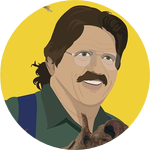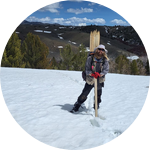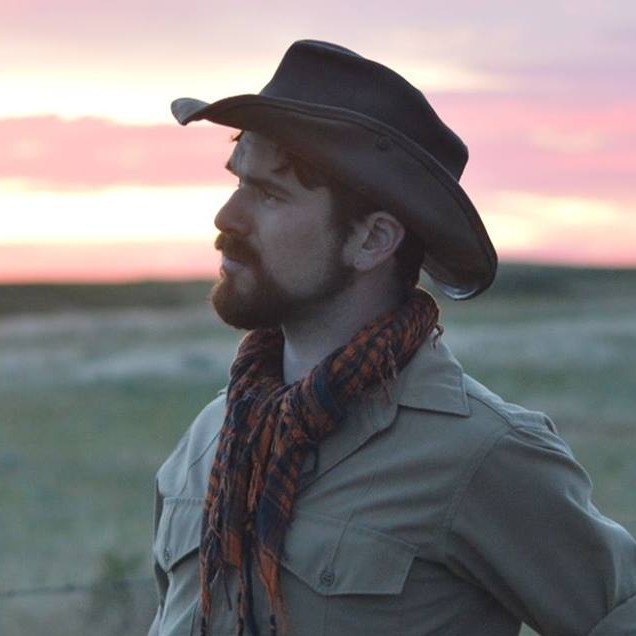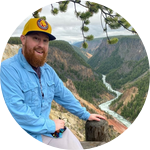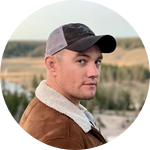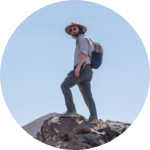About This Project
In 2021 and 2023 we surveyed the Late Cretaceous Almond Formation of Wyoming for fossils. We discovered the first crocodiles, turtles, and fish from the deposit, as well as an abundance of dinosaurs. Being geographically and temporally intermediate between well-studied formations to the north and south, these specimens likely represent new species. To interpret and document these specimens we will lead an expedition to begin excavations this summer.
Ask the Scientists
Join The DiscussionWhat is the context of this research?
Fossils from the very end of the Cretaceous period in Wyoming are very well studied and include such famous species as Triceratops and Ankylosaurus. The ecosystems that lived during the Campanian stage of the Cretaceous (~83-72 million years ago) are very well known elsewhere in Western North America, but only limited remains of this age are known from Wyoming. The Almond Formation of Southern Wyoming is a Campanian-aged rock unit that our team explored for fossils in 2021 and 2022. During those surveys we discovered numerous important fossils sites that we now hope to excavate this Summer.
What is the significance of this project?
In the Campanian stage of the Cretaceous period a shallow inland seaway stretched from the Arctic Ocean to the Gulf of Mexico, dividing the continent into two separate landmasses. The western part of the continent, called Laramidia, was reduced to an island one-fifth the size North America is today. With the young Rocky Mountains rising to the west and the seaway repeatedly advancing and retreating in the east, Laramidia became a natural laboratory for dinosaur evolution. By determining which types of organisms lived when and where on Laramidia, we can interpret how species interacted, evolved, and went extinct with previously unparalleled levels of accuracy for the dinosaur fossil record.
What are the goals of the project?
Our goal is to reconstruct an ecosystem from Southern Wyoming that went extinct 73 million years ago. To accomplish this goal we will be collecting all identifiable remains of vertebrate and invertebrate animals as well as fossil plants. Whereas the previous two years have been primarily focused on finding important localities, this year will be focused primarily on excavating the most important sites discovered during those surveys. These include a site preserving the skull of a hadrosaurid dinosaur and another preserving the remains of important gastropod, fish, crocodiles, and turtles. Work will consist of several weeks of intense physical labor to extricate the fossils from the rock.
Budget
As an army marches on its stomach, our crews depend on good meals to carry out exhaustive excavations. We need enough food to last 3 or 4 weeks. If we cannot raise at least the requested $1,000, our team of students and volunteers will have to pay out of pocket.
With the support of Experiment donors in 2022, we raised enough to purchase equipment such as an outdoor garage, coolers, and many hand and excavation tools. Additional funds are now required to expand our arsenal of tools and for consumable camp supplies.
Excavation of fossils requires more than picks and shovels. Large quantities of plaster and burlap are necessary to encase specimens, and special glues are needed to harden bone.
Our specimens will be delivered to a curation facility in Ohio. Funds are necessary to pay for a rental vehicle to drive cross country and for fuel during fieldwork.
Endorsed by
 Project Timeline
Project Timeline
We will leave for the field around June 12, 2023. We expect to work until the end of June or early July. After this the specimens will be driven to our museum in Ohio where they will be prepared, studied, and curated.
May 24, 2023
Project Launched
Jun 12, 2023
Leave for the field
Jul 09, 2023
Drop off specimens at museum in Ohio
Meet the Team
Affiliates
Team Bio
We are a team of early career geology researchers and students studying the diversity and ecology of Late Cretaceous dinosaurs in the Western U.S.
Ethan Warner-Cowgill
I am a paleontology student studying Jurassic and Cretaceous dinosaurs and crocodylomorphs. I have conducted paleontological fieldwork across the American West from Montana to Texas and everywhere in between. I study paleontology not just because I like to make discoveries and live in the wilderness but also because it has the potential to solve grand puzzles about evolution, climate change, and extinction.
Logan Ashurst-McGee
I am an Associate in Geology from Salt Lake Community College. I am currently a senior at the University of Utah and working as a Junior Geologist for a local mineral exploration firm. I have had an affinity for the outdoors from a young age and appreciate any and all opportunities to work in remote areas. In addition to paleontology, I have experience with soil and water sampling, core drilling, claim staking, biological studies, and mineral research. I greatly appreciate how the study of geology and paleontology has broadened my understanding of the world around me and the changes it has experienced, and I look forward to expanding my knowledge and expertise in these fields.
Danny Anduza
I'm a freelance dinosaur paleontologist based in the San Francisco Bay Area. My primary research interests include dinosaur ontogeny, evolution, and functional morphology, with current work focusing on the behavior and feeding ecology of spinosaurids and ankylosaurs. When I'm not collecting dinosaurs for various museums across the American West, I'm hosting "Paleontologizing," a science outreach show which broadcasts every weekday on the livestreaming platform Twitch.
Matt Affolter
Matt Affolter is an adjunct professor at Salt Lake Community College. He has a BS in geology from UCLA, an MS in geology from the University of Montana, and an MA in teaching from the University of Utah. His specialty is sedimentary geology.
Nicolas Oliver
I am a Geology/ Paleontology Student at San Diego State University and currently work as an Associate Paleontologist performing natural resource mitigation for PaleoWest & Chronicle Heritage in the greater southwestern region of the United States. I’ve spent the better part of a decade performing field, lab, and museum work across North America with the goal of satisfying my desire to learn more about the history of the earth and life that has existed on it.
Quinn Hawkins
Paleontologist with a bachelors in geology at Mercyhurst University. Fortunate to study Paleozoic and late Cretaceous fossils. As a paleontologist I have the unique opportunity to unravel the enigmatic tales of prehistoric life, shed light on evolutionary patterns, and ultimately contribute to the broader understanding of our planet's intricate history and the remarkable diversity that has evolved over millions of years.
Project Backers
- 62Backers
- 302%Funded
- $7,100Total Donations
- $114.52Average Donation
